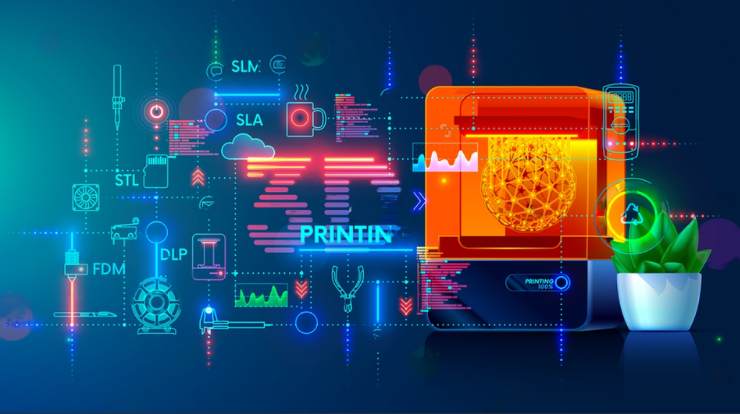
Advantages of 3d Printing for Aerospace in Dubai

3D printing, also known as additive manufacturing, has emerged as a transformative technology in the aerospace industry. In Dubai, where aerospace plays a significant role in the region's economic development, 3D printing has opened up new possibilities and advantages.
This article explores the numerous benefits and advantages of 3D printing for aerospace in Dubai, covering various aspects that have made it an indispensable tool for the industry's growth and innovation.
1. Rapid Prototyping and Iteration
One of the most significant advantages of 3D printing in Dubai's aerospace sector is its ability to facilitate rapid prototyping and design iteration.
Speed and Efficiency: Traditional manufacturing processes for aerospace components involve lengthy lead times for tooling and production setup. With 3D printing, Dubai's aerospace companies can dramatically reduce lead times, enabling rapid prototyping of components.
Cost Reduction: Rapid prototyping with 3D printing minimizes the need for expensive molds and tooling. This translates into significant cost savings, particularly for testing and refining new designs.
Design Flexibility: Engineers and designers can quickly create prototypes and iterate on designs, allowing them to test and refine concepts more efficiently. This is invaluable for developing customized and complex aerospace components.
2. Complex Geometries and Lightweight Structures
3D printing Dubai enables the creation of complex geometries and lightweight structures that were once challenging or impossible to manufacture using traditional methods.
Innovative Designs: Dubai's aerospace engineers can explore innovative and optimized designs that were previously constrained by traditional manufacturing techniques. 3D printing offers unmatched design freedom, allowing for highly efficient and optimized components.
Lightweight Components: Lightweighting is a critical aspect of aerospace design, as it contributes to improved fuel efficiency and overall performance. 3D printing techniques, such as lattice structures, reduce component weight while maintaining strength.
Enhanced Functionality: The technology allows for the integration of multiple functions within a single component, which can reduce part count and increase the efficiency of the aerospace systems.
3. Customization and Personalization
In Dubai's aerospace sector, 3D printing is employed for creating customized and personalized components, enhancing the passenger experience and performance.
Aircraft Interiors: Dubai is known for its luxury and high-end aviation sector. 3D printing is used to create bespoke aircraft interiors, ranging from seating to lighting fixtures, providing passengers with a unique and luxurious experience.
Tailored Components: Customization in aerospace components, such as seating, ventilation, and storage solutions, can be achieved through 3D printing, catering to individual needs and preferences.
Improved Passenger Experience: Personalized cabin designs create a distinct and memorable experience for passengers, contributing to Dubai's reputation for luxury aviation services.
4. Aircraft Engine Components
Dubai-based aerospace companies are increasingly using 3D printing for manufacturing critical engine components, with significant advantages.
Precision and Complexity: 3D printing technology allows for the creation of intricate, high-precision, and complex engine parts. This results in enhanced engine efficiency and reduced fuel consumption.
Reduced Weight: Engine components produced through 3D printing tend to be lighter than their conventionally manufactured counterparts, contributing to improved fuel efficiency and overall aircraft performance.
Shorter Lead Times: The quick turnaround time for producing engine components with 3D printing can reduce the downtime for maintenance and repair, increasing aircraft operational efficiency.
5. Drones and Unmanned Aerial Vehicles (UAVs)
3D printing plays a pivotal role in the development of drones and UAVs in Dubai, offering several advantages.
Rapid Prototyping: UAVs are subject to frequent design changes and iterations. 3D printing allows for rapid prototyping and testing of new designs, accelerating development.
Custom Payloads: 3D printing technology enables the creation of custom payloads and specialized components for drones and UAVs, tailored to specific mission requirements.
Lightweight Structures: Lightweight components are crucial for UAVs, as they impact flight time and payload capacity. 3D printing is ideal for producing lightweight yet durable parts.
6. Satellite and Space Exploration
Dubai has ambitious space exploration plans, and 3D printing is a key enabler for the development of satellite components and space exploration equipment.
Rapid Production: 3D printing technology allows for the rapid production of satellite components, reducing manufacturing lead times and enabling cost-effective space exploration projects.
Cost Reduction: The cost-effective nature of 3D printing makes it a compelling choice for space-related projects, where budgets can be constrained.
Complex Structures: Space equipment often requires intricate and customized components. 3D printing excels in creating such complex structures, meeting the demands of space exploration.
7. Supply Chain Optimization
3D printing can optimize the aerospace supply chain in Dubai, offering several advantages.
On-Demand Production: With 3D printing, components can be produced on-demand, reducing the need for maintaining large inventories of spare parts. This minimizes the capital tied up in inventory.
Reduced Transportation: Parts can be manufactured closer to where they are needed, reducing transportation costs and delivery times. This is especially beneficial for MRO (Maintenance, Repair, and Overhaul) operations.
Lower Warehousing Costs: Reduced inventory and on-demand production lead to lower warehousing costs, freeing up capital and storage space.
8. Environmental Benefits
The aerospace industry is increasingly focusing on sustainability, and 3D printing offers several environmentally friendly advantages.
Reduced Material Waste: Traditional subtractive manufacturing methods often result in significant material waste, while 3D printing is an additive process that uses material more efficiently.
Lighter Components: The use of 3D printing can reduce the weight of aircraft components, leading to fuel savings and lower emissions.
Sustainable Practices: Embracing 3D printing aligns with the industry's push for greener and more sustainable aviation in Dubai.
Conclusion
The advantages of 3D printing for the aerospace industry in Dubai are numerous and significant. From rapid prototyping and complex geometries to cost savings, customization, and sustainability, 3D printing is revolutionizing the way aerospace components and structures are designed, manufactured, and maintained in the region.
As the technology continues to evolve, Dubai's aerospace sector is poised to benefit even more from the advantages offered by 3D printing, driving innovation and efficiency in the industry.
Appreciate the creator